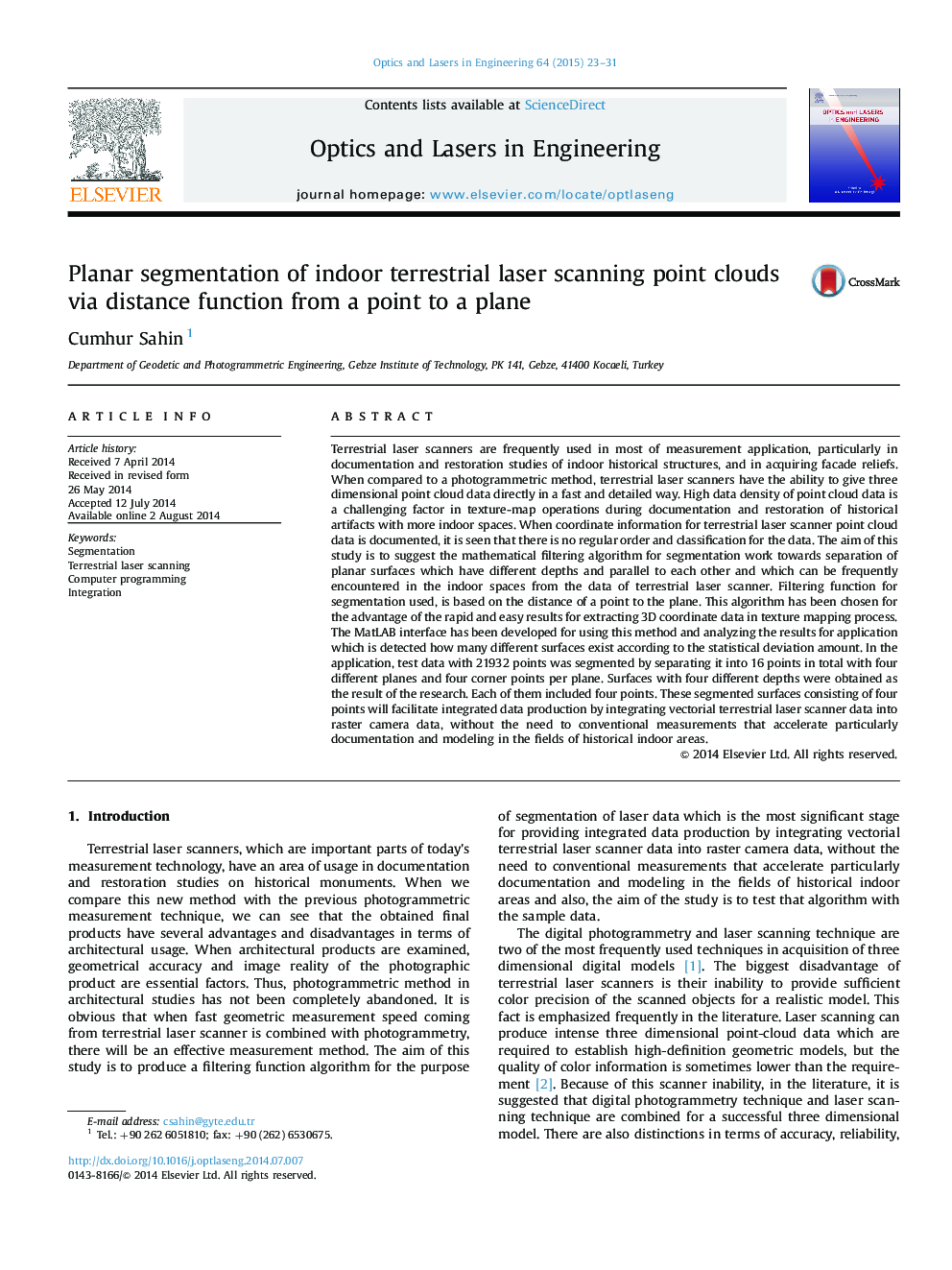| Article ID | Journal | Published Year | Pages | File Type |
|---|---|---|---|---|
| 734837 | Optics and Lasers in Engineering | 2015 | 9 Pages |
•The region growing segmentation method.•Indoor TLS application.•MATLAB programming.
Terrestrial laser scanners are frequently used in most of measurement application, particularly in documentation and restoration studies of indoor historical structures, and in acquiring facade reliefs. When compared to a photogrammetric method, terrestrial laser scanners have the ability to give three dimensional point cloud data directly in a fast and detailed way. High data density of point cloud data is a challenging factor in texture-map operations during documentation and restoration of historical artifacts with more indoor spaces. When coordinate information for terrestrial laser scanner point cloud data is documented, it is seen that there is no regular order and classification for the data. The aim of this study is to suggest the mathematical filtering algorithm for segmentation work towards separation of planar surfaces which have different depths and parallel to each other and which can be frequently encountered in the indoor spaces from the data of terrestrial laser scanner. Filtering function for segmentation used, is based on the distance of a point to the plane. This algorithm has been chosen for the advantage of the rapid and easy results for extracting 3D coordinate data in texture mapping process. The MatLAB interface has been developed for using this method and analyzing the results for application which is detected how many different surfaces exist according to the statistical deviation amount. In the application, test data with 21932 points was segmented by separating it into 16 points in total with four different planes and four corner points per plane. Surfaces with four different depths were obtained as the result of the research. Each of them included four points. These segmented surfaces consisting of four points will facilitate integrated data production by integrating vectorial terrestrial laser scanner data into raster camera data, without the need to conventional measurements that accelerate particularly documentation and modeling in the fields of historical indoor areas.
